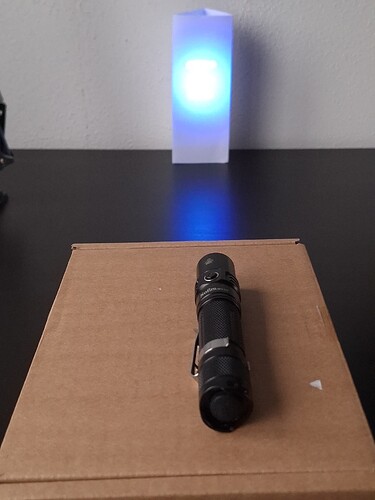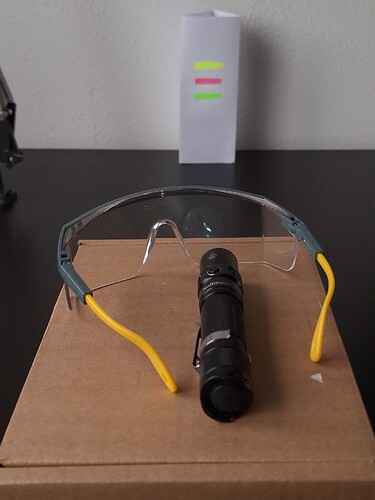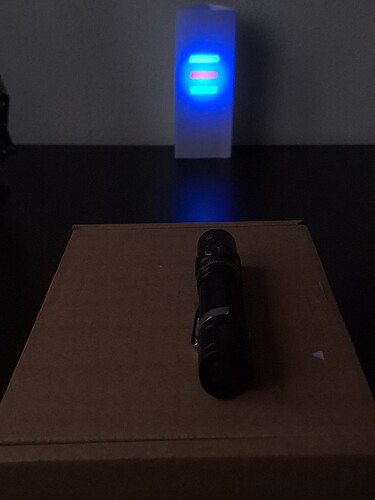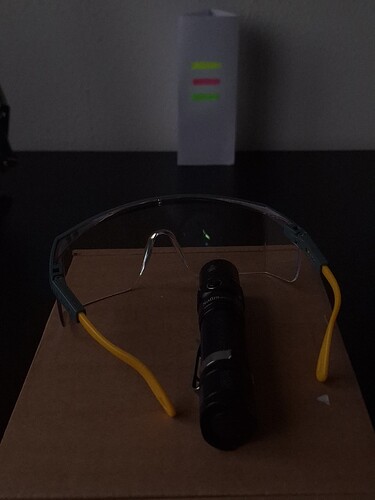It is maybe not directly showing students that UV is invisible, but it might be an interesting ‘experiment’ to show them. I used the only UV light that I currently have (Sofirn SP31 UV), which doesn’t have a ZWB2 filter, so there is extra/excess visible blue light, but for this experiment it didn’t really matter.
I used a pair of (quality) clear safety glasses, which are rated as UV400 glasses. First I took a photo without the glasses, in which the paper (with highlight marker stripes) light up clearly by the UV light.
Then I put the UV blocking safety glasses in front of the flashlight, which than clearly showed that basicly all the (UV) light was blocked.
You can probably also do this with sunglasses (or regular glasses) which have an UV rating, but with clear safety glasses it’s probably the most obvious that they don’t interfere or affect the regular visible light.
Not sure if it is something that is usefull or interesting to show your students, but it is something that just popped into my mind! ![]()
I took 2 sets of photos, because it wasn’t possible (for my phone’s camera) to expose correctly for everything in one shot. In real life it is way more clear, since your eyes can correctly expose for the scene as a whole. (EDIT: in a different topic djozz found a way so that his phone’s camera exposed properly for the UV, but I hadn’t thought of that unfortunately.)
Manually corrected the camera settings to compensate for the UV hotspot on the paper:



